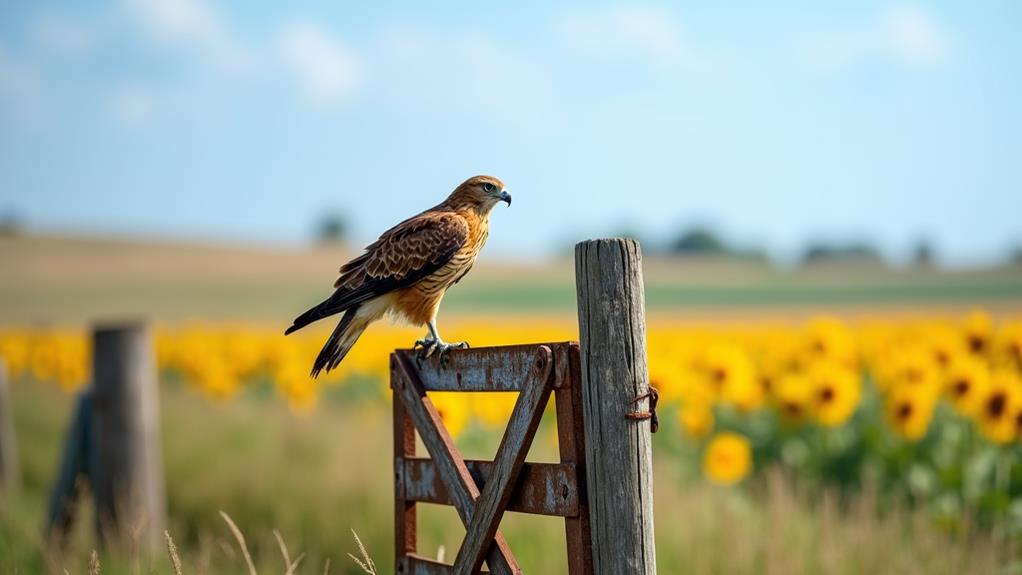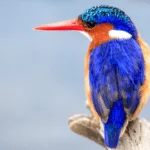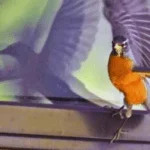As you drive down Iowa's rural roads, you've probably spotted a Red-tailed Hawk soaring overhead, its distinctive call echoing through the air. But did you know that Iowa is home to several other hawk species, each with its unique characteristics and habits? From the agile Cooper's Hawk to the migratory Broad-winged Hawk, these birds of prey thrive in Iowa's diverse landscapes. Yet, despite their presence, many Iowans are still unaware of the fascinating world of hawks in their own backyard. What secrets do these birds hold, and how can you uncover them?
Key Takeaways
- Iowa's diverse landscapes provide habitats for various hawk species, including Red-tailed, Cooper's, and Broad-winged Hawks.
- Each hawk species has distinct nesting habits, such as building nests in trees, shrubs, or on the ground.
- Food sources play a crucial role in determining a hawk's habitat, with species feeding on small mammals, reptiles, amphibians, birds, and insects.
- Hawks often congregate near areas with abundant food, such as agricultural fields, wetlands, or near water sources.
- Understanding habitat preferences and food sources is essential for identifying and appreciating hawk species in Iowa.
Species Overview and Habitat
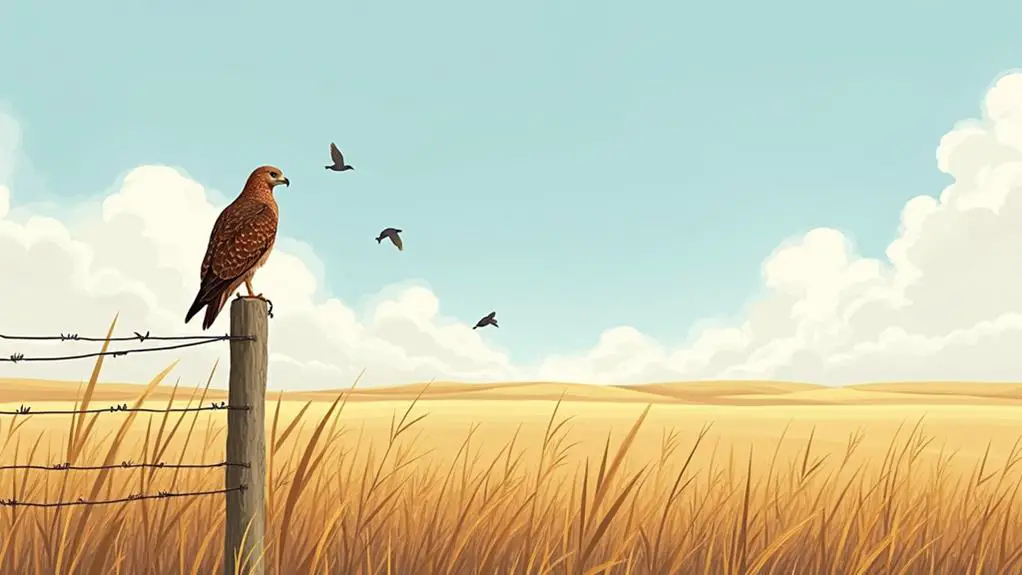
As you venture into Iowa's diverse landscapes, you'll encounter several species of hawks, each with unique characteristics and habitat preferences.
These birds of prey have adapted to various environments, from grasslands to forests, and wetlands to urban areas.
You'll find that each species has distinct nesting habits, such as building nests in trees, shrubs, or even on the ground.
Food sources also play a crucial role in determining a hawk's habitat.
Some species, like the Red-tailed Hawk, feed on small mammals, reptiles, and amphibians, while others, like the Cooper's Hawk, prey on birds and insects.
You'll notice that hawks often congregate near areas with abundant food, such as agricultural fields, wetlands, or near water sources.
Understanding the specific habitat preferences and food sources of each hawk species is essential for identifying and appreciating these magnificent birds.
Common Hawk Species in Iowa
You're likely to spot several common hawk species in Iowa, given the state's diverse landscapes and habitats. From the open prairies to the wooded areas, Iowa provides an ideal environment for various hawk species to thrive.
| Species | Folklore Significance | Cultural Symbolism |
|---|---|---|
| Red-tailed Hawk | Associated with strength and courage in many Native American cultures | Represents freedom and vision in Western cultures |
| Cooper's Hawk | Known for its agility and speed, symbolizing quick wit and adaptability | Often seen as a symbol of protection and vigilance |
| Broad-winged Hawk | Featured in ancient myths as a messenger between humans and gods | Embodies swiftness, agility, and keen vision in many cultures |
These species are not only a common sight in Iowa but also hold significant cultural and folklore importance. The Red-tailed Hawk, for instance, is revered for its strength and courage, while the Cooper's Hawk is admired for its agility and speed. Similarly, the Broad-winged Hawk has been featured in ancient myths as a messenger between humans and gods. Understanding these symbolic meanings can deepen your appreciation for these magnificent birds of prey.
Hawk Identification and Characteristics

Riding thermals high above Iowa's rolling hills, hawks patrol their territories with piercing gazes, their sharp silhouettes a testament to their mastery of the skies.
As you observe these magnificent birds, you'll notice distinct characteristics that set them apart from other raptors.
To accurately identify hawks, focus on their anatomy and behavior.
There are three key features to look for:
- Wing shape and size: Hawks have broad, rounded wings with a subtle curvature, perfect for soaring and gliding. Their wingspans range from 48 inches (Red-shouldered Hawk) to 72 inches (Red-tailed Hawk).
- Head and beak shape: Hawks have a distinctive head shape, with a flat, rounded crown and a sharp, hooked beak. Their beaks are designed for tearing flesh, with a sharp, curved upper mandible.
- Tail feathers and flight patterns: Hawks have long, broad tail feathers with a rounded tip, which they use to steer and brake during flight. Their flight patterns often involve slow, deliberate wingbeats and soaring on thermals.
Habitat and Migration Patterns
Iowa's varied landscape provides hawks with a range of habitats, from lush wetlands to rolling hills and open grasslands.
You'll find them nesting in trees, perching on fence posts, or soaring overhead, taking advantage of the diverse environments. In Iowa, hawks are adapted to various ecosystems, from forests to grasslands, and even urban habitats.
During migration, hawks follow specific flight patterns, often traveling along ridges, coastlines, or valleys.
These patterns help them conserve energy and take advantage of wind currents and thermals. Some species, like the Broad-winged Hawk, migrate in large flocks, while others, like the Red-shouldered Hawk, migrate alone or in small groups.
You might observe hawks migrating during the spring and fall, typically between March and May, and August and October.
Understanding these habitat and migration patterns helps you appreciate the complexity and adaptability of Iowa's hawk populations. By recognizing their habits, you can better identify and appreciate these magnificent birds of prey.
Conservation Status and Threats
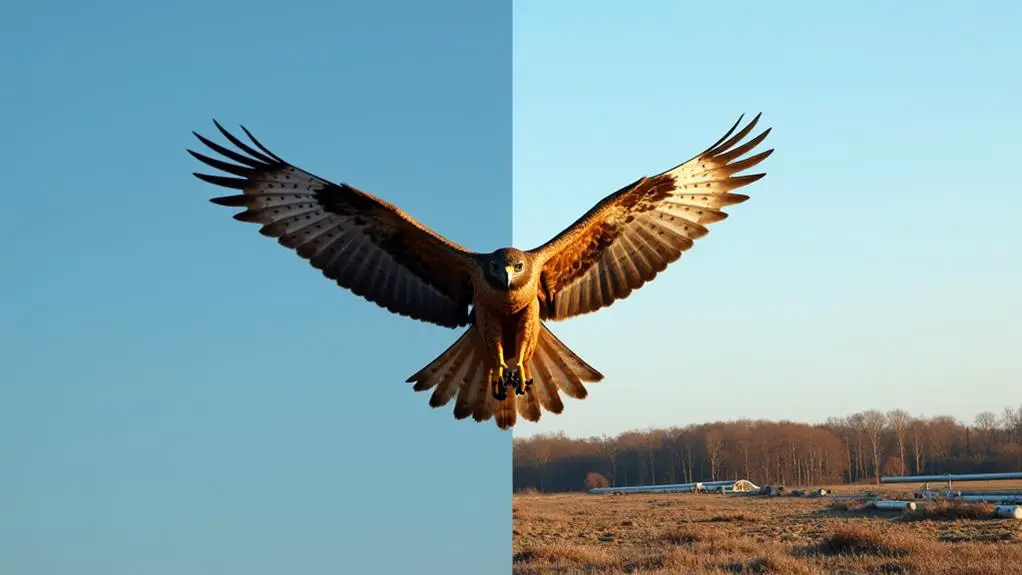
Habitat degradation and fragmentation pose significant threats to Iowa's hawk populations, as human activities alter and destroy natural habitats.
Human impact on the environment has led to the destruction of native grasslands, forests, and wetlands, reducing the available habitat for hawks.
This degradation and fragmentation of habitats make it difficult for hawks to find suitable breeding, foraging, and nesting grounds.
You should be concerned about the following threats to Iowa's hawk populations:
- Climate change: Rising temperatures and changing precipitation patterns alter the distribution and abundance of prey species, making it difficult for hawks to adapt and survive.
- Human-induced mortality: Collisions with wind turbines, power lines, and other human-made structures cause significant mortality among hawk populations.
- Pesticide and chemical use: The use of pesticides and chemicals in agriculture contaminates the food chain, affecting the health and reproduction of hawks.
Understanding these threats is crucial to developing effective conservation strategies to protect Iowa's hawk populations.
Frequently Asked Questions
Can Hawks Be Kept as Pets in Iowa?
You're wondering if you can keep hawks as pets; unfortunately, it's not that simple. In Iowa, hawk ownership requires special permits, and even then, it's only allowed for specific purposes like rehabilitation or education, not as traditional pets.
Do Hawks Attack Humans or Pets?
You've likely wondered if hawks attack humans or pets; surprisingly, hawk aggression towards humans is rare, as they're wary of human fear and typically target smaller prey, but may attack if feeling threatened or protecting their young.
Can I Feed Hawks in My Backyard?
You're wondering if you can feed hawks in your backyard; while tempting, it's generally not recommended, as it can alter their natural behavior and create dependencies, advise hawk enthusiasts, who instead suggest embracing backyard wildlife by providing natural attractants.
Are Hawks Protected by Law in Iowa?
You'll find that hawks are indeed protected by law, as federal and state regulations, including Iowa's conservation laws, safeguard their populations and habitats, ensuring the long-term survival of these magnificent birds through sustainable hawk conservation practices.
Can I Hunt Hawks in Iowa?
You're probably itching to take down that soaring hawk, but hold your fire! In Iowa, hawks are protected, and you can't hunt them, except during specific hunting seasons with special permits, and even then, only licensed trappers can do so.
Conclusion
As you explore Iowa's diverse landscapes, remember that each hawk species plays a vital role in its ecosystem. By understanding their unique habits and preferences, you can better appreciate these magnificent birds. But can we ensure their continued thriving in the face of habitat loss and climate change? Iowa's hawks need our conservation efforts to protect their habitats and food sources. By taking action, we can safeguard the future of these apex predators and the delicate balance of our state's ecosystems.

